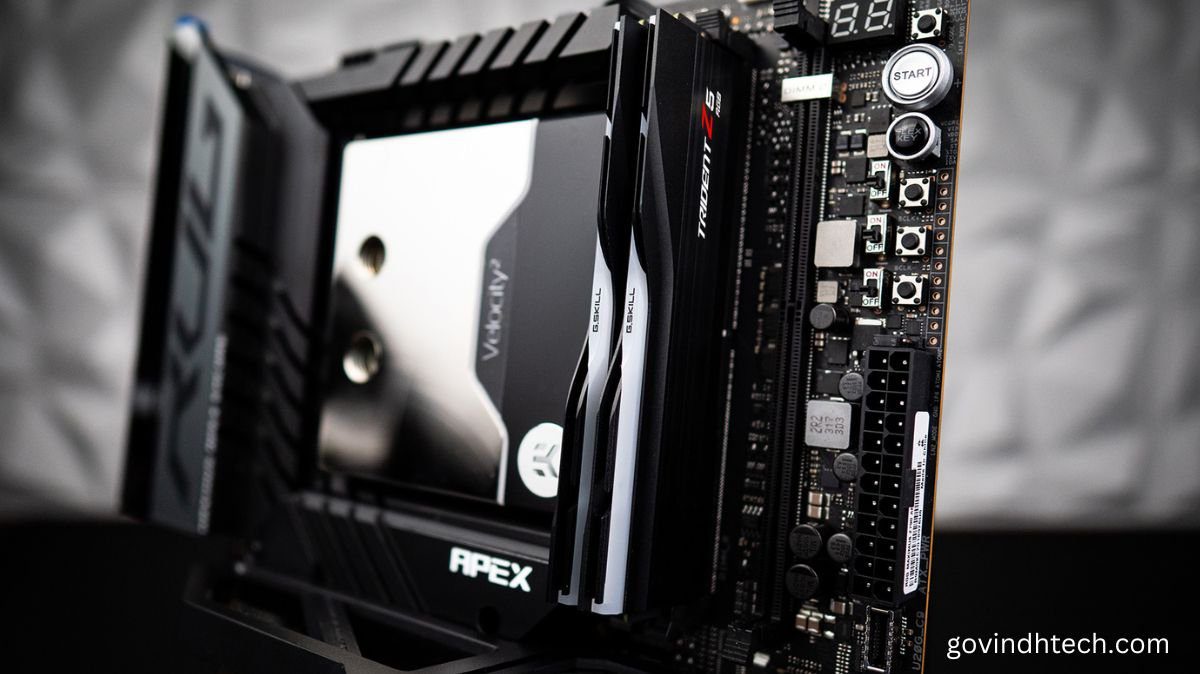G.Skill has debuted its DDR5-8600 RAM for use with Raptor Lake Refresh processors
54% more than the officially maximum frequency that may be sustained by Raptor Lake Refresh
G.Skill has introduced its new Trident Z5 RGB DDR5-8400 C40 2x24GB memory kit, which is designed to be compatible with Intel’s newest 14th Generation Raptor Lake Refresh chips and is on par with the most capable central processing units (CPUs). Additionally, the corporation made use of the chance to demonstrate the forthcoming DDR5-8600 type.
In terms of memory support, the Raptor Lake Refresh did not in any way affect the state of affairs. The newly released ‘Intel 7’ CPUs, much like the earlier Raptor Lake components, continue to launch with compatibility for either DDR4-3200 or DDR5-5600 memory modules. On the other hand, Intel claims that memory overclocking has significantly improved with Raptor Lake Refresh; however, the exact degree of this improvement is yet unknown.
It is still probable that you will want a top-binned 14th Generation CPU with a powerful integrated memory controllers (IMC) to match with an overclocking-oriented LGA1700 motherboard in order to run ultra-high-end memory kits such as G.Skill’s DDR5-8600 memory. This is because ultra-high-end memory kits are designed to push the envelope in terms of performance.
A dual-channel memory kit with a capacity of 48GB, the Trident Z5 RGB DDR5-8400 (F5-8400J4052G24GX2-TZ5RW) is made of two DDR5 memory modules, each of which has a capacity of 24GB. Memory kit specifications allow for DDR5-8400 performance when timings are set to 40-52-52-134 and a DRAM voltage of 1.4V is used.

Since the memory kit is primarily intended for use with Raptor Lake Refresh processors, it naturally supports XMP 3.0, which enables a simple “one-click” configuration process. However, the likelihood of plug-and-play is quite low, unless you win the silicon lottery and happen to have a Raptor Lake Refresh processor that possesses an incredible input/output memory controller (IMC).
G.Skill demonstrated the power of the Trident Z5 RGB DDR5-8400 by combining it with an Intel Core i9-14900K and an Asus ROG Maximus Z790 Apex Encore motherboard. On the AIDA64 test, the remarkable generic benchmark statistics reached a peak of 128.88 GB/s read, 127.03 GB/s write, and 123.83 GB/s copy. Despite this, a memory kit that is even quicker is now in the works.
G.Skill has given us a sneak glimpse at the Trident Z5 RGB DDR5-8600, which will compete with other RAMs to be included in our list of the best. The memory kit has a capacity that is equivalent to that of the DDR5-8400 variant, which is 48 GB (2 x 24 GB).
Given that the timings for the DDR5-8600 memory kit are 40-54-54-136, it would appear that all G.Skill needed to do to improve performance was add two more clock cycles to the tRCD and tRP values. However, the manufacturer did not include any information on the necessary DRAM voltage for the memory kit.
G.Skill got read speeds of 130.66 GB/s, write speeds of 130.24 GB/s, and copy speeds of 126.31 GB/s using AIDA64 with the identical test configuration as described above. Those are very slight improvements, and they were only made in theoretical testing, but they are nevertheless very amazing all the same.
The cost of either the DDR5-8400 or the DDR5-8600 memory kits was not disclosed by G.Skill. You should always anticipate to pay a large premium for cutting-edge memory kits since they are not inexpensive. The new Trident Z5 RGB DDR5-8400 and DDR5-8600 memory kits should be available for purchase by the time the month is up, according to the expected release date.


[…] has released the fastest DDR5 RDIMM memory available, with server speeds of up to 8000 MT/s and capacities of up to 128 […]
[…] Performance Structure: DDR5 and DDR4 for AMD and Intel […]
[…] decision to not make significant differences between the two devices. Thus, with the exception of RAM, charging speed, and battery size, the Red Magic 9 Pro and Pro+ are identical in every manner. What […]
[…] The amount of processor cores, active instruction set extensions, memory capacity, virtual disk size and content, Ethernet network address, and other configuration options can all be changed on hardware. The platform employs virtio devices for networking, drives, and entropy (instead of devices from some particular real-world RISC-V-based system-on-chip (SoC)) to simplify program support. Practically speaking, it feels and appears like a little embedded device, despite the fact that it may be configured with many gigabytes of disk and RAM. […]
[…] The central processing unit, or CPU, functions on a 2S platform, therefore specifies that it utilizes the resources of two chips and has a total of 288 cores. A CPU, or central processing unit, is used when combined with 256 terabytes of DDR5 RAM. […]
[…] to 32 GB of DDR5 RAM, an NVIDIA RTX 2050 or Intel Arc graphics card, and an Intel Core Ultra 7 processor with AI-ready […]